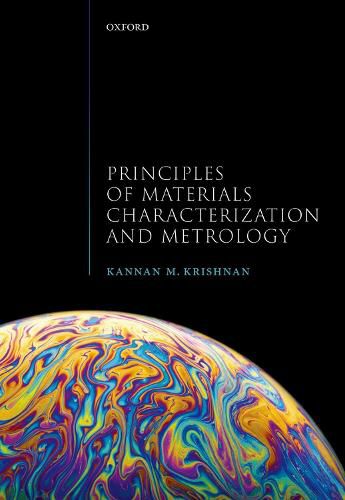Readings Newsletter
Become a Readings Member to make your shopping experience even easier.
Sign in or sign up for free!
You’re not far away from qualifying for FREE standard shipping within Australia
You’ve qualified for FREE standard shipping within Australia
The cart is loading…






Characterization enables a microscopic understanding of the fundamental properties of materials (Science) to predict their macroscopic behaviour (Engineering). With this focus, Principles of Materials Characterization and Metrology presents a comprehensive discussion of the principles of materials characterization and metrology. Characterization techniques are introduced through elementary concepts of bonding, electronic structure of molecules and solids, and the arrangement of atoms in crystals. Then, the range of electrons, photons, ions, neutrons and scanning probes, used in characterization, including their generation and related beam-solid interactions that determine or limit their use, is presented. This is followed by ion-scattering methods, optics, optical diffraction, microscopy, and ellipsometry. Generalization of Fraunhofer diffraction to scattering by a three-dimensional arrangement of atoms in crystals leads to X-ray, electron, and neutron diffraction methods, both from surfaces and the bulk. Discussion of transmission and analytical electron microscopy, including recent developments, is followed by chapters on scanning electron microscopy and scanning probe microscopies. The book concludes with elaborate tables to provide a convenient and easily accessible way of summarizing the key points, features, and inter-relatedness of the different spectroscopy, diffraction, and imaging techniques presented throughout. Principles of Materials Characterization and Metrology uniquely combines a discussion of the physical principles and practical application of these characterization techniques to explain and illustrate the fundamental properties of a wide range of materials in a tool-based approach. Based on forty years of teaching and research, this book incorporates worked examples, to test the reader's knowledge with extensive questions and exercises.
$9.00 standard shipping within Australia
FREE standard shipping within Australia for orders over $100.00
Express & International shipping calculated at checkout
Characterization enables a microscopic understanding of the fundamental properties of materials (Science) to predict their macroscopic behaviour (Engineering). With this focus, Principles of Materials Characterization and Metrology presents a comprehensive discussion of the principles of materials characterization and metrology. Characterization techniques are introduced through elementary concepts of bonding, electronic structure of molecules and solids, and the arrangement of atoms in crystals. Then, the range of electrons, photons, ions, neutrons and scanning probes, used in characterization, including their generation and related beam-solid interactions that determine or limit their use, is presented. This is followed by ion-scattering methods, optics, optical diffraction, microscopy, and ellipsometry. Generalization of Fraunhofer diffraction to scattering by a three-dimensional arrangement of atoms in crystals leads to X-ray, electron, and neutron diffraction methods, both from surfaces and the bulk. Discussion of transmission and analytical electron microscopy, including recent developments, is followed by chapters on scanning electron microscopy and scanning probe microscopies. The book concludes with elaborate tables to provide a convenient and easily accessible way of summarizing the key points, features, and inter-relatedness of the different spectroscopy, diffraction, and imaging techniques presented throughout. Principles of Materials Characterization and Metrology uniquely combines a discussion of the physical principles and practical application of these characterization techniques to explain and illustrate the fundamental properties of a wide range of materials in a tool-based approach. Based on forty years of teaching and research, this book incorporates worked examples, to test the reader's knowledge with extensive questions and exercises.